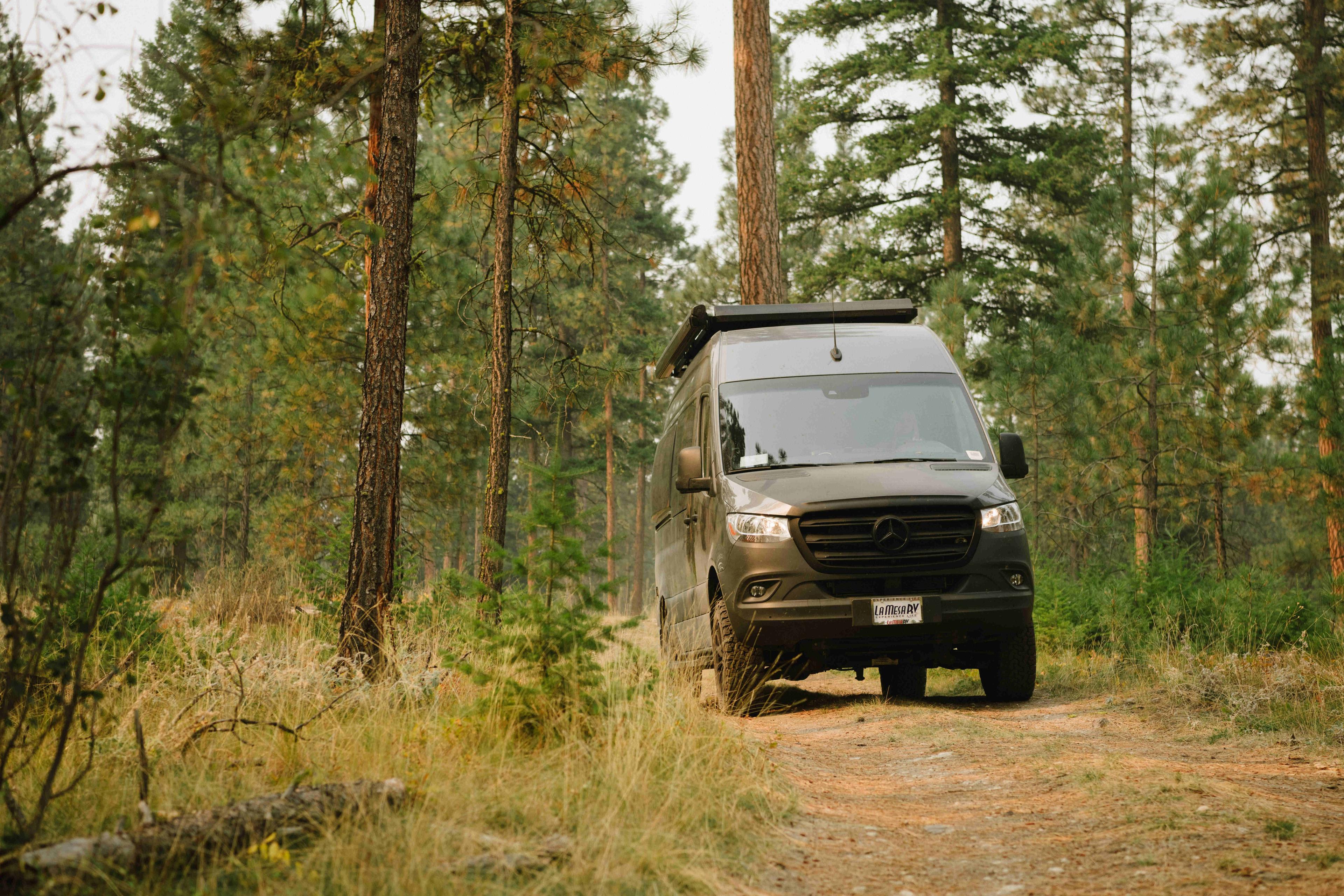Dec 30, 2021
How to keep your RV fridge cold while driving
How to keep your RV fridge cold while driving
Discover how to keep your RV fridge cold while driving. This post covers tips for keeping food cold when not plugged in.
Common questions
Blog Post
Education

One of the perks of RVing is being able to keep your food and drinks cold with a refrigerator. While you’re on a campsite, it’s as easy as plugging into shore power and starting the fridge up.
But what do you do when you’re on the road?
There’s no need to let your food spoil while you get from point A to point B. Here are a few ways to keep your fridge cold while driving.
1. Utilize your batteries.
Using an inverter, you can convert the 12V DC power from the deep-cycle battery in your RV into 120V AC power. A fridge will take quite a bit of energy from the battery, so you will only be able to use this for a short time before getting back to shore power to charge it back up.
While this is technically possible in a travel trailer or fifth wheel, using your batteries is a much more practical option in a motorhome. Many motorhomes are wired so that the alternator charges both the chassis batteries (aka your starting battery) and your house batteries. This means that you’ll be able to run your fridge for a longer period of time when traveling in most motorhomes. Just bear in mind that discharging the battery to use the inverter and recharging with the alternator will shorten the lifespan of your deep-cycle battery.
RECHARGING YOUR BATTERY
Don’t let a dead battery get you down. Read our guide to learn how to recharge your RV battery using a generator.
2. Keep your gas generator running.
Your RV may come with a built-in gasoline generator. This is more common on motorhomes, but some travel trailers will also have one. If your RV has a built-in generator, you’re in luck— running your refrigerator while you’re driving will be easy. Just turn the generator on before you hit the road and power on your refrigerator.
In a travel trailer, the generator will have its own fuel tank that you have to keep full, and it should be as simple as pouring a gas can into the tank. In a Class A or Class C motorhome, this generator will be supplied by the main gas tank that also fuels the engine. Fuel efficiency shouldn’t be a huge concern with this since it only takes about one gallon every hour. Just make sure to keep the tank full if you want to keep your fridge running, since most systems will shut down the generator when the fuel level goes below one-quarter capacity.
If your trailer doesn’t have a built-in generator, this becomes a little more complicated for you. Yes, you can run a portable generator that you have to power your RV’s 120V AC power system, but that doesn’t mean that you should. There are a number of safety concerns to consider.
First, you should never run a generator inside your RV. Doing this can fill it with toxic, asphyxiant gases that would put your trailer out of commission for at least the rest of the trip. This means your RV has to have a mount in place to hold a generator securely on the exterior of the vehicle, typically on the tow bar between the trailer and your car. If you want to use a generator with this setup, make sure that it is very securely in place before driving, since a full internal combustion engine is one of the worst things you could possibly drop onto the highway behind you.
It’s also important to note that operating a propane generator while on the road is strictly prohibited in several states.
GET A PERSONALIZED QUOTE
No two RVs are alike— and neither is the insurance to go with it! Get a quote from Roamly based on your location, your RV, and more.
3. Forgo power and use ice.
If you can’t use the options above, you’ll just have to rely on your fridge staying cold until you get to shore power. Luckily, refrigerators are designed to keep the heat out, so even when they aren’t running, they are insulated enough to keep your food cold for a long time.
One strategy to improve how long your food stays cold is to put the fridge to its coldest setting before heading out on the road. The colder it starts, the longer it takes to warm up.
Another strategy is to keep a bag of ice in the fridge with your food. The ice will draw heat into itself, keeping the rest of your food from heating up. Keeping your RV fridge running while you're driving is great, but it’s not the end of the world for your cheeses and cold cuts if you can’t.
SAVE MONEY AND ENERGY BY INSULATING
Insulating your RV can keep your conditioned air in and the outside air out. Learn how to insulate your RV windows for maximum energy efficiency and comfort.
A note on using propane to power your fridge while driving
Most RV refrigerators are what are known as “2-way refrigerators.” This means that they can be run either off of 120V AC power or liquid petroleum gas, typically propane. While it isn’t as environmentally responsible as solar or wind energy, propane is a (relatively) clean-burning gas that can power a refrigerator more efficiently than a gasoline-powered generator.
Using propane to power your fridge is a great option while your RV is stationary. However, there are some major risks associated with running a propane refrigerator while driving. The issue with propane systems is that they do need tightly sealed piping to safely transport the propane from the tank to the fridge, stove, water heater, or anything else it is connected to. So if you run the system while driving, you run the risk of hitting a nasty bump in the road and loosening a connection in the piping or puncturing it, causing a gas leak inside your RV. From there, only a tiny spark is needed to ignite all that propane gas and turn your RV into an inferno.
The chances of this happening are low, but not zero. Many RVers do use their propane systems while driving and claim it’s safe. But just because a serious accident has happened yet doesn’t mean it won’t.
On top of this, states strictly regulate how propane is used and transported on highways. Some states will prohibit using propane appliances while driving. Others may have regulations on which roads you can transport propane on altogether.
And when it comes to RV insurance, we've got you covered. Explore options by clicking the button below.
Roamly Insurance Group, LLC ("Roamly") is a licensed general agent for affiliated and non-affiliated insurance companies. Roamly is licensed as an agency in all states in which products are offered. Roamly license numbers. Availability and qualification for coverage, terms, rates, and discounts may vary by jurisdiction. We do not in any way imply that the materials on the site or products are available in jurisdictions in which we are not licensed to do business or that we are soliciting business in any such jurisdiction. Coverage under your insurance policy is subject to the terms and conditions of that policy and is ultimately the decision of the buyer.
Policies provided by Roamly are underwritten by Spinnaker Insurance Company, Progressive Insurance Company, Safeco Insurance Company, Foremost Insurance Company, National General Insurance, Mobilitas Insurance Company, and others.
Connect
© 2025 Roamly All rights reserved.
